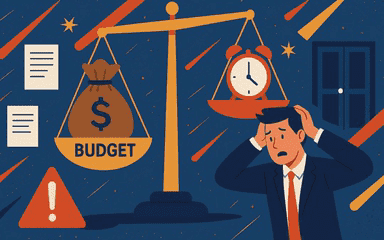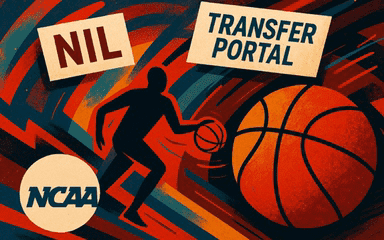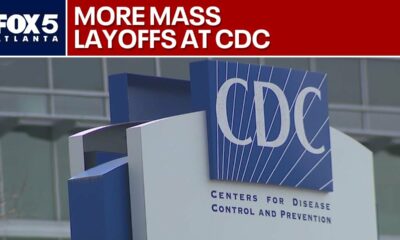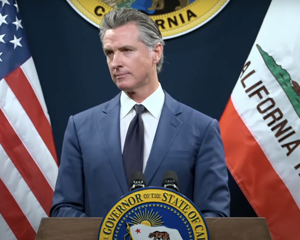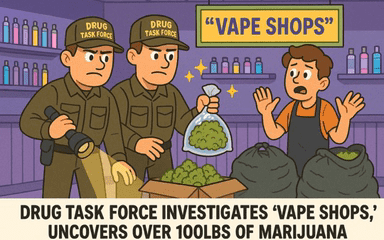Kaiser Health News
What Does a Chatbot Know About Eating Disorders? Users of a Help Line Are About to Find Out
by Kate Wells, Michigan Radio
Mon, 12 Jun 2023 09:00:00 +0000
For more than 20 years, the National Eating Disorders Association has operated a phone line and online platform for people seeking help for anorexia, bulimia, and other eating disorders. Last year, nearly 70,000 individuals used the help line.
NEDA shuttered that service in May, saying that, in its place, a chatbot called Tessa, designed by eating disorder experts with funding from NEDA, would be deployed.
When NPR aired a report about this last month, Tessa was up and running online. Since then, both the chatbot’s page and a NEDA article about Tessa have been taken down. When asked why, NEDA said the bot is being “updated,” and the latest “version of the current program [will be] available soon.”
Then NEDA announced on May 30 that it was indefinitely disabling Tessa. Patients, families, doctors, and other experts on eating disorders were stunned. The episode has set off a fresh wave of debate as companies turn to artificial intelligence as a possible solution for a mental health crisis and treatment shortage.
Paid staffers and volunteers for the NEDA help line said that replacing the service with a chatbot could further isolate the thousands of people who use it when they feel they have nowhere else to turn.
“These young kids … don’t feel comfortable coming to their friends or their family or anybody about this,” said Katy Meta, a 20-year-old college student who has volunteered for the help line. “A lot of these individuals come on multiple times because they have no other outlet to talk with anybody. … That’s all they have, is the chat line.”
The decision is part of a larger trend: Many mental health organizations and companies are struggling to provide services and care in response to a sharp escalation in demand, and some are turning to chatbots and AI, even though clinicians are still trying to figure out how to effectively deploy them, and for what conditions.
The help line’s five staffers formally notified their employer they had formed a union in March. Just a few days later, on a March 31 call, NEDA informed them that they would be laid off in June. NPR and KFF Health News obtained audio of the call. “We will, subject to the terms of our legal responsibilities, [be] beginning to wind down the help line as currently operating,” NEDA board chair Geoff Craddock told them, “with a transition to Tessa, the AI-assisted technology, expected around June 1.”
NEDA’s leadership denies the decision had anything to do with the unionization but told NPR and KFF Health News it became necessary because of the covid-19 pandemic, when eating disorders surged and the number of calls, texts, and messages to the help line more than doubled.
The increase in crisis-level calls also raises NEDA’s legal liability, managers explained in an email sent March 31 to current and former volunteers, informing them that the help line was ending and that NEDA would “begin to pivot to the expanded use of AI-assisted technology.”
“What has really changed in the landscape are the federal and state requirements for mandated reporting for mental and physical health issues (self-harm, suicidality, child abuse),” according to the email, which NPR and KFF Health News obtained. “NEDA is now considered a mandated reporter and that hits our risk profile — changing our training and daily work processes and driving up our insurance premiums. We are not a crisis line; we are a referral center and information provider.”
Pandemic Created a ‘Perfect Storm’ for Eating Disorders
When it was time for a volunteer shift on the help line, Meta usually logged in from her dorm room at Dickinson College in Pennsylvania.
Meta recalled a recent conversation on the help line’s messaging platform with a girl who said she was 11. The girl said she had just confessed to her parents that she was struggling with an eating disorder, but the conversation had gone badly.
“The parents said that they ‘didn’t believe in eating disorders’ and [told their daughter], ‘You just need to eat more. You need to stop doing this,’” Meta recalled. “This individual was also suicidal and exhibited traits of self-harm as well. … It was just really heartbreaking to see.”
Eating disorders are common, serious, and sometimes fatal illnesses. An estimated 9% of Americans experience an eating disorder during their lifetimes. Eating disorders also have some of the highest mortality rates among mental illnesses, with an estimated death toll of more than 10,000 Americans each year.
But after covid hit, closing schools and forcing people into prolonged isolation, crisis calls and messages like the one Meta describes became far more frequent on the help line.
In the U.S., the rate of pediatric hospitalizations and ER visits surged. On the NEDA help line, client volume increased by more than 100% compared with pre-pandemic levels.
“Eating disorders thrive in isolation, so covid and shelter-in-place was a tough time for a lot of folks struggling,” explained Abbie Harper, who has worked as a help line associate.
Until a few weeks ago, the help line was run by just five to six paid staffers and two supervisors, and it depended on a rotating roster of 90-165 volunteers at any given time, according to NEDA.
Yet even after lockdowns ended, NEDA’s help line volume remained elevated above pre-pandemic levels, and the cases continued to be clinically severe. Staffers felt overwhelmed, undersupported, and increasingly burned out, and turnover increased, according to multiple interviews.
The help line staff formally notified NEDA that their unionization vote had been certified on March 27. Four days later, they learned their positions were being eliminated.
“Our volunteers are volunteers,” said Lauren Smolar, NEDA’s vice president of mission and education. “They’re not professionals. They don’t have crisis training. And we really can’t accept that kind of responsibility.” Instead, she said, people seeking crisis help should be reaching out to resources like 988, a 24/7 suicide and crisis hotline that connects people with trained counselors.
The surge in volume also meant the help line was unable to respond immediately to 46% of initial contacts, and it could take six to 11 days to respond to messages.
“And that’s frankly unacceptable in 2023, for people to have to wait a week or more to receive the information that they need, the specialized treatment options that they need,” Smolar said.
After learning in the March 31 email that the helpline would be phased out, volunteer Faith Fischetti, 22, tried out the chatbot on her own, asking it some of the more frequent questions she gets from users. But her interactions with Tessa were not reassuring: “[The bot] gave links and resources that were completely unrelated” to her questions, she said.
Fischetti’s biggest worry is that someone coming to the NEDA site for help will leave because they “feel that they’re not understood, and feel that no one is there for them. And that’s the most terrifying thing to me.”
A Chatbot Can Miss Red Flags
Tessa the chatbot was created to help a specific cohort: people with eating disorders who never receive treatment.
Only 20% of people with eating disorders get formal help, according to Ellen Fitzsimmons-Craft, a psychologist and associate professor at Washington University School of Medicine in St. Louis. Her team created Tessa after receiving funding from NEDA in 2018, with the goal of looking for ways technology could help fill the treatment gap.
NEDA said Tessa was supposed to be a “rule-based” chatbot, meaning one that is programmed with a limited set of possible responses. It is not ChatGPT and cannot generate unique answers in response to specific queries. “So she can’t go off the rails, so to speak,” Fitzsimmons-Craft said.
The plan was for Tessa to guide users through an interactive, weeks-long course about body positivity, based on cognitive behavioral therapy tools. Additional content about bingeing, weight concerns, and regular eating was under development but not yet available to users.
There’s evidence the AI approach can help. Fitzsimmons-Craft’s team did a small study that found college students who interacted with Tessa had significantly greater reductions in “weight/shape concerns” than a control group at three- and six-month follow-ups.
But even the best-intentioned technology can carry risks. Fitzsimmons-Craft’s team published a different study looking at ways the chatbot “unexpectedly reinforced harmful behaviors at times.” For example, the chatbot would give users a prompt: “Please take a moment to write about when you felt best about your body?”
Responses included: “When I was underweight and could see my bones.” “I feel best about my body when I ignore it and don’t think about it at all.”
The chatbot seemed to ignore the troubling aspects of such responses — and even to affirm negative thinking — when it would reply: “It is awesome that you can recognize a moment when you felt confident in your skin, let’s keep working on making you feel this good more often.”
Researchers were able to troubleshoot some of those issues. But the chatbot still missed red flags, the study found, such as when it asked: “What is a small healthy eating habit goal you would like to set up before you start your next conversation?”
One user replied, “Don’t eat.”
“Take a moment to pat yourself on the back for doing this hard work, <<USER>>!” the chatbot responded.
Massachusetts Institute of Technology assistant professor Marzyeh Ghassemi has seen issues like this crop up in her own research developing machine learning to improve health.
Large language models and chatbots will inevitably make mistakes, but “sometimes they tend to be wrong more often for certain groups, like women and minorities,” she said.
If people receive bad advice or instructions from a bot, “people sometimes have a difficulty not listening to it,” Ghassemi added. “I think it sets you up for this really negative outcome … especially for a mental health crisis situation, where people may be at a point where they’re not thinking with absolute clarity. It’s very important that the information that you give them is correct and is helpful to them.”
And if the value of the live help line was the ability to connect with a real person who deeply understands eating disorders, Ghassemi said, a chatbot can’t do that.
“If people are experiencing a majority of the positive impact of these interactions because the person on the other side understands fundamentally the experience they’re going through, and what a struggle it’s been, I struggle to understand how a chatbot could be part of that.”
Tessa Goes ‘Off the Rails’
When Sharon Maxwell heard NEDA was promoting Tessa as “a meaningful prevention resource” for those struggling with eating disorders, she wanted to try it out.
Maxwell, based in San Diego, had struggled for years with an eating disorder that began in childhood. She now works as a consultant in the eating disorder field. “Hi, Tessa,” she typed into the online text box. “How do you support folks with eating disorders?”
Tessa rattled off a list of ideas, including resources for “healthy eating habits.” Alarm bells immediately went off in Maxwell’s head. She asked Tessa for details. Before long, the chatbot was giving her tips on losing weight — ones that sounded an awful lot like what she’d been told when she was put on Weight Watchers at age 10.
“The recommendations that Tessa gave me were that I could lose 1 to 2 pounds per week, that I should eat no more than 2,000 calories in a day, that I should have a calorie deficit of 500-1,000 calories per day,” Maxwell said. “All of which might sound benign to the general listener. However, to an individual with an eating disorder, the focus of weight loss really fuels the eating disorder.”
It’s really important that you find what healthy snacks you like the most, so if it’s not a fruit, try something else!
Tessa, the chatbot
NEDA blamed the chatbot’s issues on Cass, the mental health chatbot company that operated Tessa as a free service. Cass had changed Tessa without NEDA’s awareness or approval, said NEDA CEO Liz Thompson, enabling the chatbot to generate new answers beyond what Tessa’s creators had intended.
Cass’ founder and CEO, Michiel Rauws, said the changes to Tessa were made last year as part of a “systems upgrade,” including an “enhanced question-and-answer feature.” That feature uses generative artificial intelligence — meaning it gives the chatbot the ability to use new data and create new responses.
That change was part of NEDA’s contract, Rauws said.
But Thompson disagrees. She told NPR and KFF Health News that “NEDA was never advised of these changes and did not and would not have approved them.”
“The content some testers received relative to diet culture and weight management, [which] can be harmful to those with eating disorders, is against NEDA policy, and would never have been scripted into the chatbot by eating disorders experts,” she said.
Complaints About Tessa Started Last Year
NEDA was aware of issues with the chatbot months before Maxwell’s interactions with Tessa in late May.
In October 2022, NEDA passed along screenshots from Monika Ostroff, executive director of the Multi-Service Eating Disorders Association in Massachusetts. They showed Tessa telling Ostroff to avoid “unhealthy” foods and eat only “healthy” snacks, like fruit.
“It’s really important that you find what healthy snacks you like the most, so if it’s not a fruit, try something else!” Tessa told Ostroff. “So the next time you’re hungry between meals, try to go for that instead of an unhealthy snack like a bag of chips. Think you can do that?”
Ostroff said this was a clear example of the chatbot encouraging “diet culture” mentality. “That meant that they [NEDA] either wrote these scripts themselves, they got the chatbot and didn’t bother to make sure it was safe and didn’t test it, or released it and didn’t test it,” she said.
The healthy-snack language was quickly removed after Ostroff reported it. But Rauws said that language was part of Tessa’s “pre-scripted language, and not related to generative AI.”
Fitzsimmons-Craft said her team didn’t write it, that it “was not something our team designed Tessa to offer and that it was not part of the rule-based program we originally designed.”
Then, earlier this year, “a similar event happened as another example,” Rauws said.
“This time it was around our enhanced question-and-answer feature, which leverages a generative model. When we got notified by NEDA that an answer text it provided fell outside their guidelines,” it was addressed right away, he said.
Rauws said he can’t provide more details about what this event entailed.
“This is another earlier instance, and not the same instance as over the Memorial Day weekend,” he said via email, referring to Maxwell’s interactions with Tessa. “According to our privacy policy, this is related to user data tied to a question posed by a person, so we would have to get approval from that individual first.”
When asked about this event, Thompson said she doesn’t know what instance Rauws is referring to.
Both NEDA and Cass have issued apologies.
Ostroff said that regardless of what went wrong, the impact on someone with an eating disorder is the same. “It doesn’t matter if it’s rule-based or generative, it’s all fat-phobic,” she said. “We have huge populations of people who are harmed by this kind of language every day.”
She also worries about what this might mean for the tens of thousands of people turning to NEDA’s help line each year.
Thompson said NEDA still offers numerous resources for people seeking help, including a screening tool and resource map, and is developing new online and in-person programs.
“We recognize and regret that certain decisions taken by NEDA have disappointed members of the eating disorders community,” she wrote in an emailed statement. “Like all other organizations focused on eating disorders, NEDA’s resources are limited and this requires us to make difficult choices. … We always wish we could do more and we remain dedicated to doing better.”
This article is from a partnership that includes Michigan Radio, NPR, and KFF Health News.
By: Kate Wells, Michigan Radio
Title: What Does a Chatbot Know About Eating Disorders? Users of a Help Line Are About to Find Out
Sourced From: kffhealthnews.org/news/article/what-does-a-chatbot-know-about-eating-disorders-users-of-a-help-line-are-about-to-find-out/
Published Date: Mon, 12 Jun 2023 09:00:00 +0000
Kaiser Health News
US Judge Names Receiver To Take Over California Prisons’ Mental Health Program
SACRAMENTO, Calif. — A judge has initiated a federal court takeover of California’s troubled prison mental health system by naming the former head of the Federal Bureau of Prisons to serve as receiver, giving her four months to craft a plan to provide adequate care for tens of thousands of prisoners with serious mental illness.
Senior U.S. District Judge Kimberly Mueller issued her order March 19, identifying Colette Peters as the nominated receiver. Peters, who was Oregon’s first female corrections director and known as a reformer, ran the scandal-plagued federal prison system for 30 months until President Donald Trump took office in January. During her tenure, she closed a women’s prison in Dublin, east of Oakland, that had become known as the “rape club.”
Michael Bien, who represents prisoners with mental illness in the long-running prison lawsuit, said Peters is a good choice. Bien said Peters’ time in Oregon and Washington, D.C., showed that she “kind of buys into the fact that there are things we can do better in the American system.”
“We took strong objection to many things that happened under her tenure at the BOP, but I do think that this is a different job and she’s capable of doing it,” said Bien, whose firm also represents women who were housed at the shuttered federal women’s prison.
California corrections officials called Peters “highly qualified” in a statement, while Gov. Gavin Newsom’s office did not immediately comment. Mueller gave the parties until March 28 to show cause why Peters should not be appointed.
Peters is not talking to the media at this time, Bien said. The judge said Peters is to be paid $400,000 a year, prorated for the four-month period.
About 34,000 people incarcerated in California prisons have been diagnosed with serious mental illnesses, representing more than a third of California’s prison population, who face harm because of the state’s noncompliance, Mueller said.
Appointing a receiver is a rare step taken when federal judges feel they have exhausted other options. A receiver took control of Alabama’s correctional system in 1976, and they have otherwise been used to govern prisons and jails only about a dozen times, mostly to combat poor conditions caused by overcrowding. Attorneys representing inmates in Arizona have asked a judge to take over prison health care there.
Mueller’s appointment of a receiver comes nearly 20 years after a different federal judge seized control of California’s prison medical system and installed a receiver, currently J. Clark Kelso, with broad powers to hire, fire, and spend the state’s money.
California officials initially said in August that they would not oppose a receivership for the mental health program provided that the receiver was also Kelso, saying then that federal control “has successfully transformed medical care” in California prisons. But Kelso withdrew from consideration in September, as did two subsequent candidates. Kelso said he could not act “zealously and with fidelity as receiver in both cases.”
Both cases have been running for so long that they are now overseen by a second generation of judges. The original federal judges, in a legal battle that reached the U.S. Supreme Court, more than a decade ago forced California to significantly reduce prison crowding in a bid to improve medical and mental health care for incarcerated people.
State officials in court filings defended their improvements over the decades. Prisoners’ attorneys countered that treatment remains poor, as evidenced in part by the system’s record-high suicide rate, topping 31 suicides per 100,000 prisoners, nearly double that in federal prisons.
“More than a quarter of the 30 class-members who died by suicide in 2023 received inadequate care because of understaffing,” prisoners’ attorneys wrote in January, citing the prison system’s own analysis. One prisoner did not receive mental health appointments for seven months “before he hanged himself with a bedsheet.”
They argued that the November passage of a ballot measure increasing criminal penalties for some drug and theft crimes is likely to increase the prison population and worsen staffing shortages.
California officials argued in January that Mueller isn’t legally justified in appointing a receiver because “progress has been slow at times but it has not stalled.”
Mueller has countered that she had no choice but to appoint an outside professional to run the prisons’ mental health program, given officials’ intransigence even after she held top officials in contempt of court and levied fines topping $110 million in June. Those extreme actions, she said, only triggered more delays.
The 9th U.S. Circuit Court of Appeals on March 19 upheld Mueller’s contempt ruling but said she didn’t sufficiently justify calculating the fines by doubling the state’s monthly salary savings from understaffing prisons. It upheld the fines to the extent that they reflect the state’s actual salary savings but sent the case back to Mueller to justify any higher penalty.
Mueller had been set to begin additional civil contempt proceedings against state officials for their failure to meet two other court requirements: adequately staffing the prison system’s psychiatric inpatient program and improving suicide prevention measures. Those could bring additional fines topping tens of millions of dollars.
But she said her initial contempt order has not had the intended effect of compelling compliance. Mueller wrote as far back as July that additional contempt rulings would also be likely to be ineffective as state officials continued to appeal and seek delays, leading “to even more unending litigation, litigation, litigation.”
She went on to foreshadow her latest order naming a receiver in a preliminary order: “There is one step the court has taken great pains to avoid. But at this point,” Mueller wrote, “the court concludes the only way to achieve full compliance in this action is for the court to appoint its own receiver.”
This article was produced by KFF Health News, which publishes California Healthline, an editorially independent service of the California Health Care Foundation.
If you or someone you know may be experiencing a mental health crisis, contact the 988 Suicide & Crisis Lifeline by dialing or texting “988.”
The post US Judge Names Receiver To Take Over California Prisons’ Mental Health Program appeared first on kffhealthnews.org
Kaiser Health News
Amid Plummeting Diversity at Medical Schools, a Warning of DEI Crackdown’s ‘Chilling Effect’
The Trump administration’s crackdown on DEI programs could exacerbate an unexpectedly steep drop in diversity among medical school students, even in states like California, where public universities have been navigating bans on affirmative action for decades. Education and health experts warn that, ultimately, this could harm patient care.
Since taking office, President Donald Trump has issued a handful of executive orders aimed at terminating all diversity, equity, and inclusion, or DEI, initiatives in federally funded programs. And in his March 4 address to Congress, he described the Supreme Court’s 2023 decision banning the consideration of race in college and university admissions as “brave and very powerful.”
Last month, the Education Department’s Office for Civil Rights — which lost about 50% of its staff in mid-March — directed schools, including postsecondary institutions, to end race-based programs or risk losing federal funding. The “Dear Colleague” letter cited the Supreme Court’s decision.
Paulette Granberry Russell, president and CEO of the National Association of Diversity Officers in Higher Education, said that “every utterance of ‘diversity’ is now being viewed as a violation or considered unlawful or illegal.” Her organization filed a lawsuit challenging Trump’s anti-DEI executive orders.
While California and eight other states — Arizona, Florida, Idaho, Michigan, Nebraska, New Hampshire, Oklahoma, and Washington — had already implemented bans of varying degrees on race-based admissions policies well before the Supreme Court decision, schools bolstered diversity in their ranks with equity initiatives such as targeted scholarships, trainings, and recruitment programs.
But the court’s decision and the subsequent state-level backlash — 29 states have since introduced bills to curb diversity initiatives, according to data published by the Chronicle of Higher Education — have tamped down these efforts and led to the recent declines in diversity numbers, education experts said.
After the Supreme Court’s ruling, the numbers of Black and Hispanic medical school enrollees fell by double-digit percentages in the 2024-25 school year compared with the previous year, according to the Association of American Medical Colleges. Black enrollees declined 11.6%, while the number of new students of Hispanic origin fell 10.8%. The decline in enrollment of American Indian or Alaska Native students was even more dramatic, at 22.1%. New Native Hawaiian or other Pacific Islander enrollment declined 4.3%.
“We knew this would happen,” said Norma Poll-Hunter, AAMC’s senior director of workforce diversity. “But it was double digits — much larger than what we anticipated.”
The fear among educators is the numbers will decline even more under the new administration.
At the end of February, the Education Department launched an online portal encouraging people to “report illegal discriminatory practices at institutions of learning,” stating that students should have “learning free of divisive ideologies and indoctrination.” The agency later issued a “Frequently Asked Questions” document about its new policies, clarifying that it was acceptable to observe events like Black History Month but warning schools that they “must consider whether any school programming discourages members of all races from attending.”
“It definitely has a chilling effect,” Poll-Hunter said. “There is a lot of fear that could cause institutions to limit their efforts.”
Numerous requests for comment from medical schools about the impact of the anti-DEI actions went unreturned. University presidents are staying mum on the issue to protect their institutions, according to reporting from The New York Times.
Utibe Essien, a physician and UCLA assistant professor, said he has heard from some students who fear they won’t be considered for admission under the new policies. Essien, who co-authored a study on the effect of affirmative action bans on medical schools, also said students are worried medical schools will not be as supportive toward students of color as in the past.
“Both of these fears have the risk of limiting the options of schools folks apply to and potentially those who consider medicine as an option at all,” Essien said, adding that the “lawsuits around equity policies and just the climate of anti-diversity have brought institutions to this place where they feel uncomfortable.”
In early February, the Pacific Legal Foundation filed a lawsuit against the University of California-San Francisco’s Benioff Children’s Hospital Oakland over an internship program designed to introduce “underrepresented minority high school students to health professions.”
Attorney Andrew Quinio filed the suit, which argues that its plaintiff, a white teenager, was not accepted to the program after disclosing in an interview that she identified as white.
“From a legal standpoint, the issue that comes about from all this is: How do you choose diversity without running afoul of the Constitution?” Quinio said. “For those who want diversity as a goal, it cannot be a goal that is achieved with discrimination.”
UC Health spokesperson Heather Harper declined to comment on the suit on behalf of the hospital system.
Another lawsuit filed in February accuses the University of California of favoring Black and Latino students over Asian American and white applicants in its undergraduate admissions. Specifically, the complaint states that UC officials pushed campuses to use a “holistic” approach to admissions and “move away from objective criteria towards more subjective assessments of the overall appeal of individual candidates.”
The scrutiny of that approach to admissions could threaten diversity at the UC-Davis School of Medicine, which for years has employed a “race-neutral, holistic admissions model” that reportedly tripled enrollment of Black, Latino, and Native American students.
“How do you define diversity? Does it now include the way we consider how someone’s lived experience may be influenced by how they grew up? The type of school, the income of their family? All of those are diversity,” said Granberry Russell, of the National Association of Diversity Officers in Higher Education. “What might they view as an unlawful proxy for diversity equity and inclusion? That’s what we’re confronted with.”
California Attorney General Rob Bonta, a Democrat, recently joined other state attorneys general to issue guidance urging that schools continue their DEI programs despite the federal messaging, saying that legal precedent allows for the activities. California is also among several states suing the administration over its deep cuts to the Education Department.
If the recent decline in diversity among newly enrolled students holds or gets worse, it could have long-term consequences for patient care, academic experts said, pointing toward the vast racial disparities in health outcomes in the U.S., particularly for Black people.
A higher proportion of Black primary care doctors is associated with longer life expectancy and lower mortality rates among Black people, according to a 2023 study published by the JAMA Network.
Physicians of color are also more likely to build their careers in medically underserved communities, studies have shown, which is increasingly important as the AAMC projects a shortage of up to 40,400 primary care doctors by 2036.
“The physician shortage persists, and it’s dire in rural communities,” Poll-Hunter said. “We know that diversity efforts are really about improving access for everyone. More diversity leads to greater access to care — everyone is benefiting from it.”
This article was produced by KFF Health News, which publishes California Healthline, an editorially independent service of the California Health Care Foundation.
The post Amid Plummeting Diversity at Medical Schools, a Warning of DEI Crackdown’s ‘Chilling Effect’ appeared first on kffhealthnews.org
Kaiser Health News
Tribal Health Leaders Say Medicaid Cuts Would Decimate Health Programs
As Congress mulls potentially massive cuts to federal Medicaid funding, health centers that serve Native American communities, such as the Oneida Community Health Center near Green Bay, Wisconsin, are bracing for catastrophe.
That’s because more than 40% of the about 15,000 patients the center serves are enrolled in Medicaid. Cuts to the program would be detrimental to those patients and the facility, said Debra Danforth, the director of the Oneida Comprehensive Health Division and a citizen of the Oneida Nation.
“It would be a tremendous hit,” she said.
The facility provides a range of services to most of the Oneida Nation’s 17,000 people, including ambulatory care, internal medicine, family practice, and obstetrics. The tribe is one of two in Wisconsin that have an “open-door policy,” Danforth said, which means that the facility is open to members of any federally recognized tribe.
But Danforth and many other tribal health officials say Medicaid cuts would cause service reductions at health facilities that serve Native Americans.
Indian Country has a unique relationship to Medicaid, because the program helps tribes cover chronic funding shortfalls from the Indian Health Service, the federal agency responsible for providing health care to Native Americans.
Medicaid has accounted for about two-thirds of third-party revenue for tribal health providers, creating financial stability and helping facilities pay operational costs. More than a million Native Americans enrolled in Medicaid or the closely related Children’s Health Insurance Program also rely on the insurance to pay for care outside of tribal health facilities without going into significant medical debt. Tribal leaders are calling on Congress to exempt tribes from cuts and are preparing to fight to preserve their access.
“Medicaid is one of the ways in which the federal government meets its trust and treaty obligations to provide health care to us,” said Liz Malerba, director of policy and legislative affairs for the United South and Eastern Tribes Sovereignty Protection Fund, a nonprofit policy advocacy organization for 33 tribes spanning from Texas to Maine. Malerba is a citizen of the Mohegan Tribe.
“So we view any disruption or cut to Medicaid as an abrogation of that responsibility,” she said.
Tribes face an arduous task in providing care to a population that experiences severe health disparities, a high incidence of chronic illness, and, at least in western states, a life expectancy of 64 years — the lowest of any demographic group in the U.S. Yet, in recent years, some tribes have expanded access to care for their communities by adding health services and providers, enabled in part by Medicaid reimbursements.
During the last two fiscal years, five urban Indian organizations in Montana saw funding growth of nearly $3 million, said Lisa James, director of development for the Montana Consortium for Urban Indian Health, during a webinar in February organized by the Georgetown University Center for Children and Families and the National Council of Urban Indian Health.
The increased revenue was “instrumental,” James said, allowing clinics in the state to add services that previously had not been available unless referred out for, including behavioral health services. Clinics were also able to expand operating hours and staffing.
Montana’s five urban Indian clinics, in Missoula, Helena, Butte, Great Falls, and Billings, serve 30,000 people, including some who are not Native American or enrolled in a tribe. The clinics provide a wide range of services, including primary care, dental care, disease prevention, health education, and substance use prevention.
James said Medicaid cuts would require Montana’s urban Indian health organizations to cut services and limit their ability to address health disparities.
American Indian and Alaska Native people under age 65 are more likely to be uninsured than white people under 65, but 30% rely on Medicaid compared with 15% of their white counterparts, according to KFF data for 2017 to 2021. More than 40% of American Indian and Alaska Native children are enrolled in Medicaid or CHIP, which provides health insurance to kids whose families are not eligible for Medicaid. KFF is a health information nonprofit that includes KFF Health News.
A Georgetown Center for Children and Families report from January found the share of residents enrolled in Medicaid was higher in counties with a significant Native American presence. The proportion on Medicaid in small-town or rural counties that are mostly within tribal statistical areas, tribal subdivisions, reservations, and other Native-designated lands was 28.7%, compared with 22.7% in other small-town or rural counties. About 50% of children in those Native areas were enrolled in Medicaid.
The federal government has already exempted tribes from some of Trump’s executive orders. In late February, Department of Health and Human Services acting general counsel Sean Keveney clarified that tribal health programs would not be affected by an executive order that diversity, equity, and inclusion government programs be terminated, but that the Indian Health Service is expected to discontinue diversity and inclusion hiring efforts established under an Obama-era rule.
HHS Secretary Robert F. Kennedy Jr. also rescinded the layoffs of more than 900 IHS employees in February just hours after they’d received termination notices. During Kennedy’s Senate confirmation hearings, he said he would appoint a Native American as an assistant HHS secretary. The National Indian Health Board, a Washington, D.C.-based nonprofit that advocates for tribes, in December endorsed elevating the director of the Indian Health Service to assistant secretary of HHS.
Jessica Schubel, a senior health care official in Joe Biden’s White House, said exemptions won’t be enough.
“Just because Native Americans are exempt doesn’t mean that they won’t feel the impact of cuts that are made throughout the rest of the program,” she said.
State leaders are also calling for federal Medicaid spending to be spared because cuts to the program would shift costs onto their budgets. Without sustained federal funding, which can cover more than 70% of costs, state lawmakers face decisions such as whether to change eligibility requirements to slim Medicaid rolls, which could cause some Native Americans to lose their health coverage.
Tribal leaders noted that state governments do not have the same responsibility to them as the federal government, yet they face large variations in how they interact with Medicaid depending on their state programs.
President Donald Trump has made seemingly conflicting statements about Medicaid cuts, saying in an interview on Fox News in February that Medicaid and Medicare wouldn’t be touched. In a social media post the same week, Trump expressed strong support for a House budget resolution that would likely require Medicaid cuts.
The budget proposal, which the House approved in late February, requires lawmakers to cut spending to offset tax breaks. The House Committee on Energy and Commerce, which oversees spending on Medicaid and Medicare, is instructed to slash $880 billion over the next decade. The possibility of cuts to the program that, together with CHIP, provides insurance to 79 million people has drawn opposition from national and state organizations.
The federal government reimburses IHS and tribal health facilities 100% of billed costs for American Indian and Alaska Native patients, shielding state budgets from the costs.
Because Medicaid is already a stopgap fix for Native American health programs, tribal leaders said it won’t be a matter of replacing the money but operating with less.
“When you’re talking about somewhere between 30% to 60% of a facility’s budget is made up by Medicaid dollars, that’s a very difficult hole to try and backfill,” said Winn Davis, congressional relations director for the National Indian Health Board.
Congress isn’t required to consult tribes during the budget process, Davis added. Only after changes are made by the Centers for Medicare & Medicaid Services and state agencies are tribes able to engage with them on implementation.
The amount the federal government spends funding the Native American health system is a much smaller portion of its budget than Medicaid. The IHS projected billing Medicaid about $1.3 billion this fiscal year, which represents less than half of 1% of overall federal spending on Medicaid.
“We are saving more lives,” Malerba said of the additional services Medicaid covers in tribal health care. “It brings us closer to a level of 21st century care that we should all have access to but don’t always.”
This article was published with the support of the Journalism & Women Symposium (JAWS) Health Journalism Fellowship, assisted by grants from The Commonwealth Fund.
KFF Health News is a national newsroom that produces in-depth journalism about health issues and is one of the core operating programs at KFF—an independent source of health policy research, polling, and journalism. Learn more about KFF.
USE OUR CONTENT
This story can be republished for free (details).
The post Tribal Health Leaders Say Medicaid Cuts Would Decimate Health Programs appeared first on kffhealthnews.org
-

 News from the South - South Carolina News Feed5 days ago
News from the South - South Carolina News Feed5 days agoSouth Carolina clinic loses funding due to federal changes to DEI mandates
-

 Mississippi Today7 days ago
Mississippi Today7 days agoRole reversal: Horhn celebrates commanding primary while his expected runoff challenger Mayor Lumumba’s party sours
-

 News from the South - Kentucky News Feed6 days ago
News from the South - Kentucky News Feed6 days ago3 killed in fiery Lexington crash temporarily shuts down portion of New Circle Road
-

 News from the South - Georgia News Feed7 days ago
News from the South - Georgia News Feed7 days agoMassive CDC layoffs begin in Atlanta | FOX 5 News
-

 News from the South - West Virginia News Feed7 days ago
News from the South - West Virginia News Feed7 days agoWest Virginia congregation rebuilding after car crashed into its church
-

 News from the South - Alabama News Feed6 days ago
News from the South - Alabama News Feed6 days agoMobile defendants sentenced to life in prison for murder-for-hire conspiracy
-

 The Center Square4 days ago
The Center Square4 days agoCA fails audit of federal programs, 66% of COVID unemployment benefits in question | California
-

 News from the South - Kentucky News Feed7 days ago
News from the South - Kentucky News Feed7 days agoDrug Task Force investigates “vape shops,” uncovers over 100lbs of marijuana



